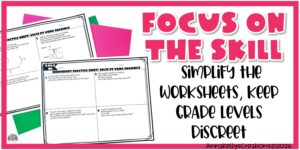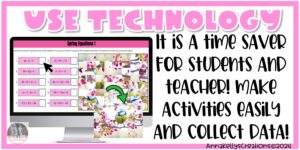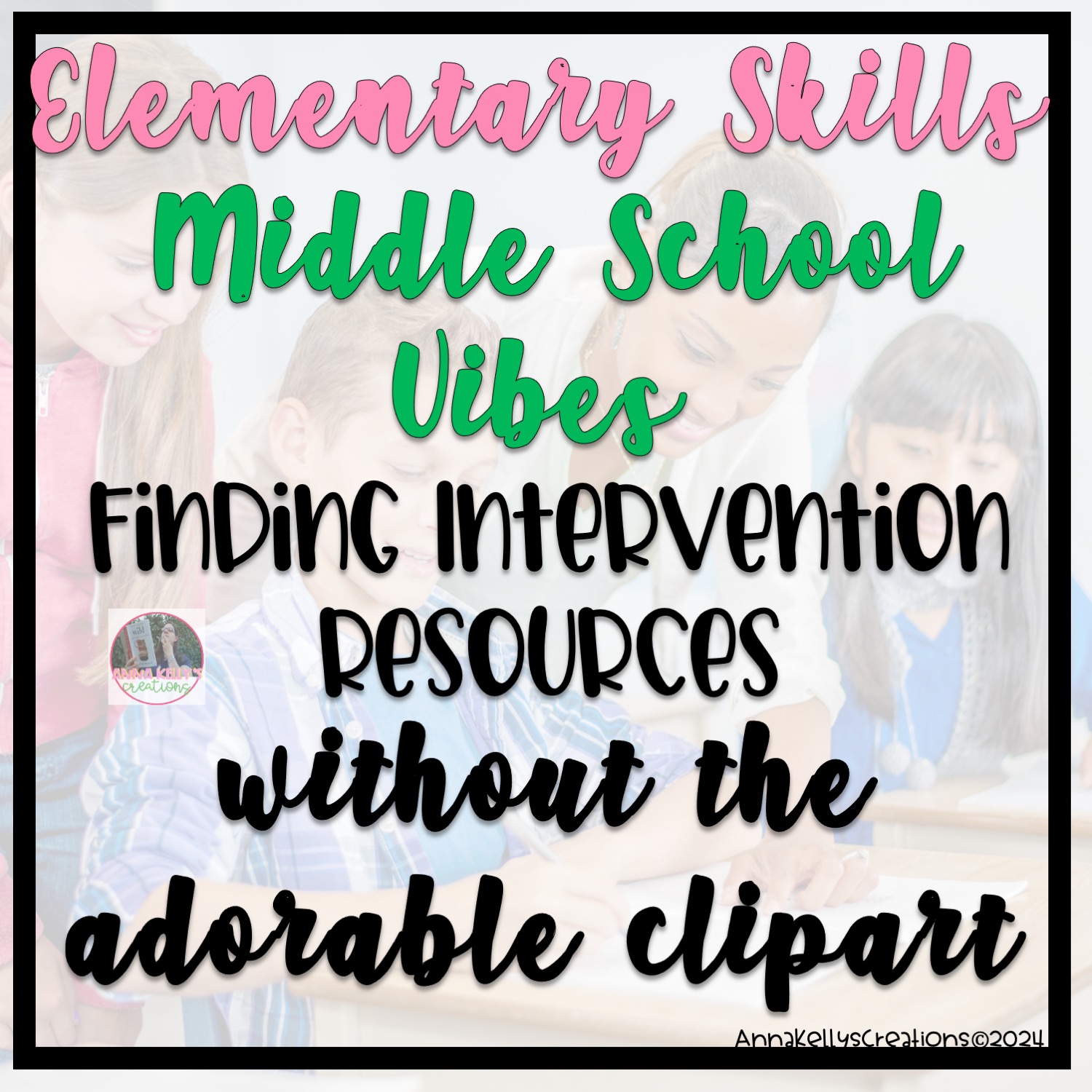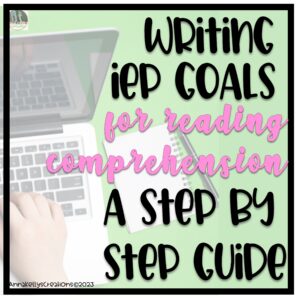Picture this: it’s my first year teaching, I’m standing in the doorway of my special education director’s office, holding an elapsed time worksheet with cute bear clipart all over it. I asked her, “I have to cut out all these bears don’t I…?” She nodded understandingly…
As intervention specialists working with middle school students, we’ve all been there. We have students who are working on skills way below their grade level. That’s the whole point of intervention, right? We’re bridging those gaps. But finding suitable resources for these students can be a challenge. We need elementary level worksheets without all the babyish clipart and giant fonts. We’ve spent hours cutting and pasting, trying to piece together different worksheets.

To make matters more delicate, our middle school special education students are already self-conscious. It’s just part of being in middle school. But on top of that, they receive special intervention. So, if we hand them worksheets with teddy bears and goofy kids, we risk losing their trust. We need to provide them with straightforward pages that focus on the skill we’re working on. And let’s keep the grade level a secret from other students, shall we?
Simplifying the materials is key to helping the students stay focused on the skills they need to learn, without getting lost in the design distractions.
Involve your students 
One crucial step I always take is sitting down with my students and explaining why we’re using lower level materials. Even if I have taken all of the cutesy and grade level stuff off. I still feel they are old enough to get involved in their learning and goal writing. They should know what grade level they are working on, and where their end goal is. The reason I say to keep the grade level off is for the prying eyes of other students. Other students don’t need to know what their classmates are working on. I validate their feelings and reassure them that this is only temporary. This approach helps them feel secure and comfortable working on the materials.
Now, don’t get me wrong. Middle schoolers still enjoy coloring and having fun. I’ve written blog posts on the topic! But we need to be strategic and make sure what they’re coloring isn’t too “babyish.”
In my years of teaching middle school intervention, I’ve discovered and created great resources that cater to these elementary level skills, without the need for hours of cutting and taping. Today, I want to share some of these resources with you, to save you some valuable time.

Incorporate More Mature Themes
Just because the worksheets are meant for elementary students, it doesn’t mean we can’t make them more engaging. For example, when teaching basic reading comprehension, I choose passages that touch on more complex topics or topics that already interest them. How many times have they read about apples or Groundhog’s Day? I find passages with different or interesting topics they haven’t explored before. I look for current events that grab their attention.
This approach makes the materials feel relevant to their lives and keeps them engaged. One great free website for this is Readworks. You can get current reading passages at different reading levels.
I have also created leveled reading comprehension passages and questions just for this reason. These are higher level interest stories but written at elementary grade levels. You can check out a free trial right here.
For math intervention I love using the free website math-aids, they create worksheets of all levels of skills without the clipart and grade level markings.
Because this is a passion of mine, having age-appropriate material for students at their skill level, I create materials for this. I also have math products, you can check out a free trial of my math word problems grades 2-5 here.
Use Technology

Last but not least, I bring technology into my intervention sessions. Technology is a big part of a middle schooler’s life, so integrating it into the lesson can boost motivation and comfort.
For instance, we might use online quizzes or games to reinforce the skills they’re learning. This approach makes the lesson feel like fun instead of a chore. Technology is also a great way to provide your students with self checking activities. Bonus for the teacher, it makes data collection fast and organized!
One activity my middle school students really enjoy, and don’t even notice their doing intervention is made for Google digital assignments. They especially enjoy the picture reveal, and escape rooms. These can be made fun and colorful and not look babyish. AND self grading! They are easy to make, and once you make one you can easily make a copy of the document and just change the questions.
In conclusion, working with middle school students who need intervention may be challenging, but it’s incredibly rewarding. By considering their differences, simplifying materials, incorporating mature themes, having open conversations, and utilizing technology, we can keep these students engaged and motivated in their learning journey.
So, yes, I’ll give my middle school students elementary level work… as long as it passes the maturity test first!




